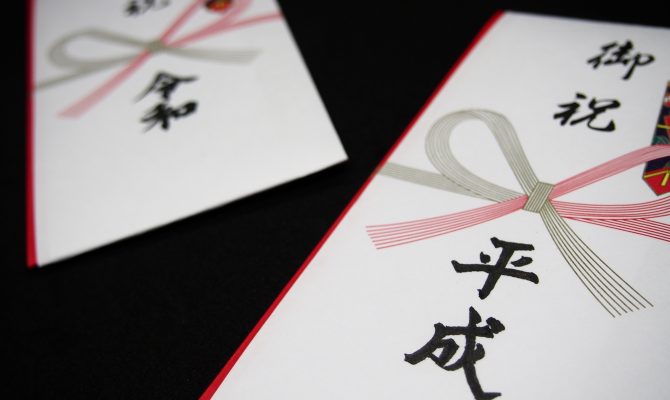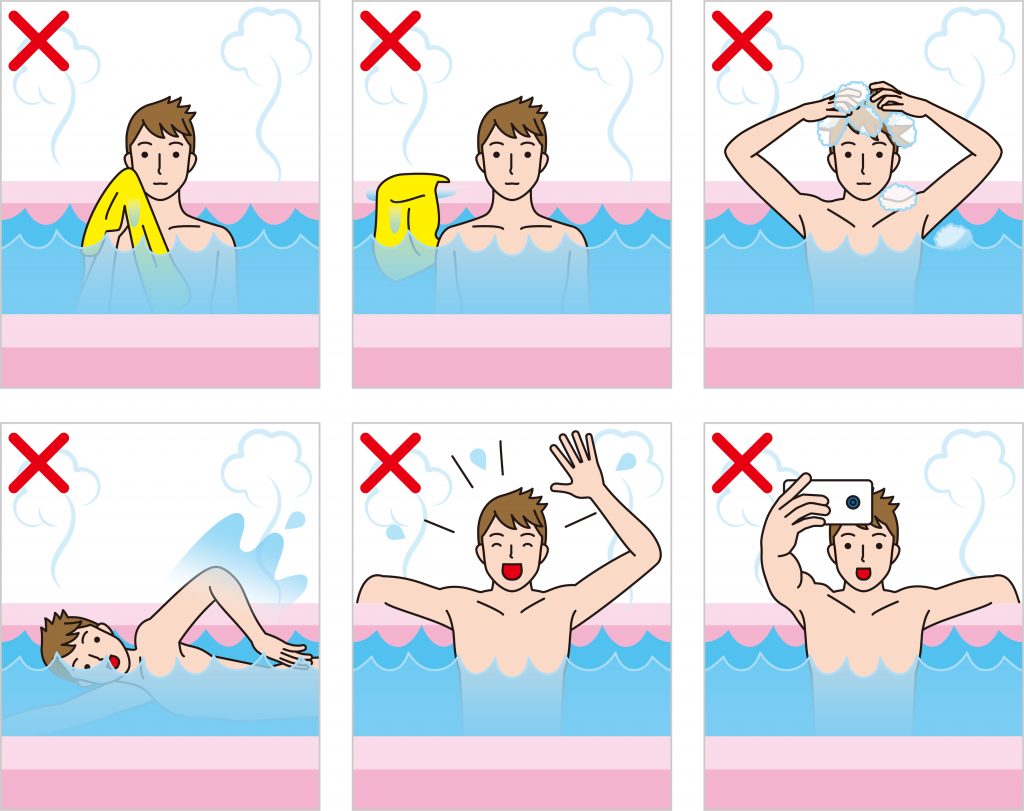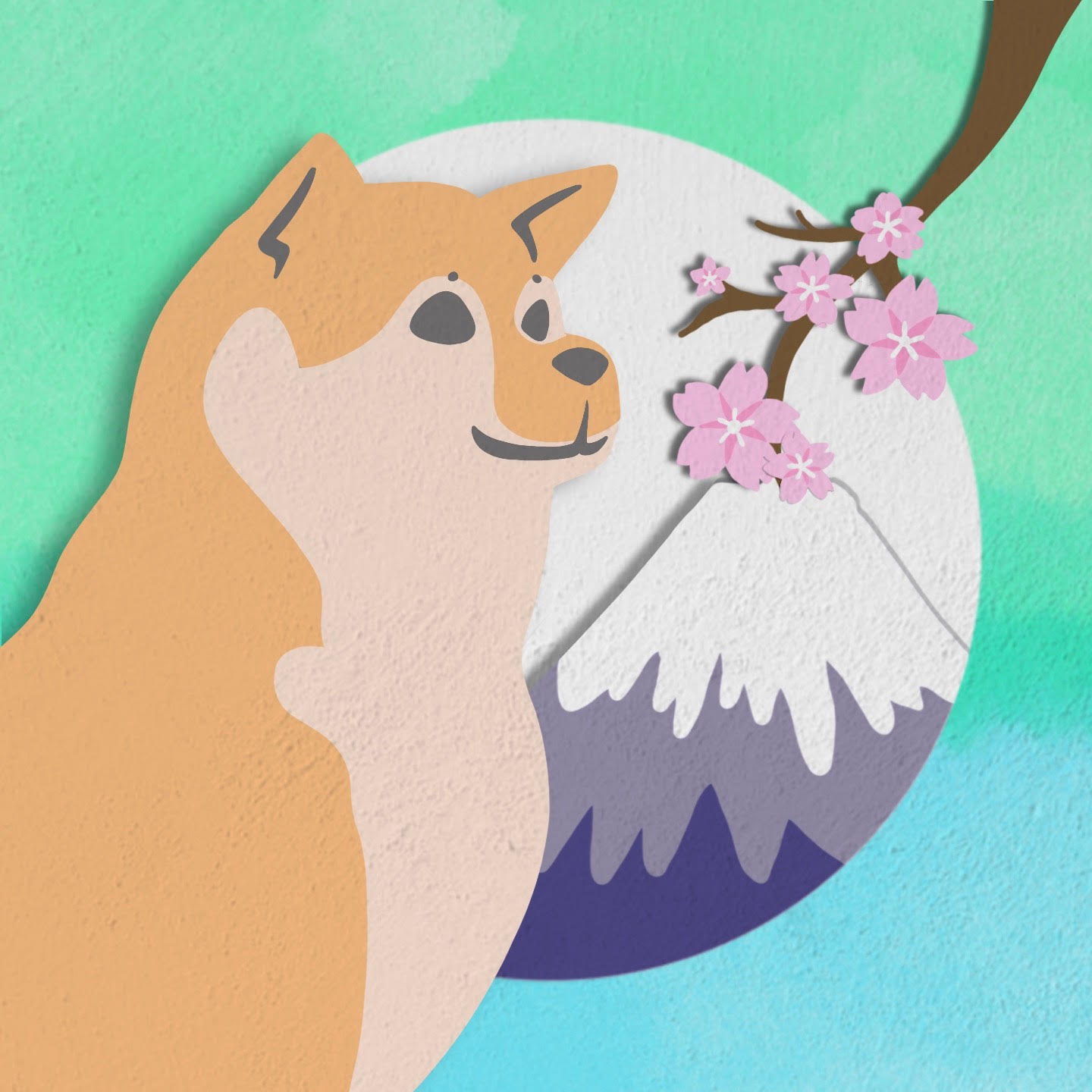Here are the top ten things to remember about Japanese etiquette. Learn the fundamentals and practical application of Japanese manners!

Many readers are probably already familiar with the book Kiss, Bow, or Shake Hands by Terri Morrison and Wayne A. Conaway. Although it was published decades ago as a resource for global business people eager to avoid social pitfalls while traveling overseas, this guide is still very much relevant today. The unique culture of Japan was a rich source for much of this text, as well as numerous other guidebooks.
It is an understatement to say that much has been written about Japanese customs and manners. To try to distill the extensive amount of published information on this subject down to a just a shortlist is a next to impossible task, but here we offer you a good place to begin. First, you need to have a perspective on the fundamentals. After that, it is useful to become familiar with some key practical considerations to ensure that your upcoming trip to the country or extended stay in Japan is successful. Let’s get started!
Fundamentals
1. Giri-Ninjo (義理・人情)
Fundamentally different from the West, where the individual is first and foremost, Japan is famous for venerating the needs of the group over individual desires. This is the age-old drama of giri vs. ninjo or duty vs. emotion. It may not be a stretch to say that this principle guides all Japanese manners. A related word that you often hear in Japan is gaman (我慢), which means perseverance, patience, and tolerance. Reinforced over centuries, the Japanese have been taught to suppress their own desires in favor of supporting the greater good of the group, including their own family, the government, or their employer. You may come across a colleague at work who aspires to be an artist for a living but has foregone such a dream and resigned to toil away dutifully until retirement as an accountant, for example, for the sake of being able to put money on the table for his family. That is giri vs. ninjo in action.

2. Deference to Hierarchy (上下関係・親孝行)
For centuries Japanese society has been highly influenced by traditional Chinese culture. One of the most enduring legacies of this influence can be traced to the teachings of Confucius, a Chinese scholar who lived more than 2,500 years ago. He emphasized the importance of proper behavior, loyalty, and obedience to hierarchy. Despite significant changes throughout Japanese society since that time, these concepts are still very much alive in modern Japan. That is why, in general, the Japanese revere their parents, show elders respect, and rarely hesitate to implement or even question the directions of their superiors.

There are, however, plenty of cases of the seemingly repressed revolt against hierarchy, but the chain of command tends to remain firmly in place in Japan. This concept is also evident as part of routine interactions between a salesperson and a customer in which a salesperson may appear to be showing so much respect for their customer as to seem obsequious. This behavior is, however, simply par for the course.

3. Keep Your Distance (他人と距離を置くこと)
While only time will tell whether Japan will successfully ward off COVID-19, pundits in the media speculate that one reason for Japan’s relatively low rate of infection may be due to the natural tendency of Japanese people to practice social distancing. The Japanese generally avoid handshakes, fist-pumping, hugs, and other public displays of affection in favor of bowing from a safe distance. Although you may find yourself on a crowded subway or elevator, you will notice that Japanese people attempt to keep their distance from others even in such a confined space. Sometimes more subtle physical barriers such as face masks are used to stay clear of others. Well before the current COVID-19 crisis, it was quite common for Japanese people to wear masks not only to protect themselves from catching germs from others but also out of consideration for the welfare of others.

Formal greetings are accomplished by bowing. While mastering the art of the bow and learning how to bow at precisely the right angle probably requires one to be born in the country, a general rule of thumb is simply to attempt to return a bow at approximately the same angle. If you are more senior than the person to whom you are bowing, you can probably get by with a slightly higher angle, and visa-versa. Remember, first to stand up straight and then bow from the waist. Just try it, and before you know it, bowing will become second nature.

4. Keep Your Cool and Don’t Rush (頭を冷やせ)
Maintain civility at all times no matter what—at least superficially. Especially when agitated, resist the urge to raise your voice, shout, or gesture violently to try to get your point across. While you may be fuming underneath, outwardly keep calm, speak slowly and deliberately to present your view of the facts. The concept is similar to the British tendency “to keep a stiff upper lip” in the face of adversity.

The moment that you give way to an emotional outburst, especially from anger, you will not be taken seriously and lose the opportunity to state your case. A corollary to this rule is to remember not to rush. Students of martial arts will be familiar with the concept of jo-ha-kyu (序破急), which means to start slowly, accelerate, and then end swiftly as a means for modulating your movement. When it’s time to end, end, don’t drag it out. You will earn respect by adhering to these principles—especially when you may not see eye to eye with your Japanese counterpart.
Practical Considerations
5. Exchanging Business Cards (名刺交換)
(1) For Beginners
One way to put #2 Deference to Hierarchy into practice is to keep track of who’s who during initial greetings that often involve business or calling cards. This practice is called meishi kokan (名刺交換). Before visiting Japan prepare by printing at least a small number of such cards. If you can make them bilingual, that would be ideal. Bilingual cards are usually printed all in Japanese on one side and in English or another language on the other side.

Keep in mind that some Japanese people—particularly many of the older generation—treat business cards with such a degree of respect. They consider business cards more than just a piece of paper with someone’s contact information printed – business cards are cherished and often kept in special meishi binders forever. Thus, it is essential to emulate the typical protocol that Japanese people follow when exchanging business cards.
When you first meet somebody, stand up and present them with your card by holding it with two hands with the text facing the person who is receiving the card. If you are using bilingual cards, have the Japanese side facing up. Your counterpart will, most likely, hold their card in the same position to reciprocate. It can sometimes be a little awkward at the point of passing each other’s cards back and forth, but you will manage. Be sure to say your position and name during the physical exchange of cards.

(2) For Advanced Learners
Especially in the case when one side is superior (e.g., a customer meeting a salesperson), the person of lower rank (e.g., the salesperson in this case) will consciously attempt to pass their business card underneath the card of their customer as a sign of respect. Upon receiving the other’s card, securely grasp it with both hands, and take a moment to study the text written on the card. Take your time to read every line. Try to identify the social status of the other person by their title, etc. It is okay for there to be a short period of silence at this point.
If you subsequently sit down at a table, position all of the cards that you receive in the order of where each person sits to keep track of who’s who. You will gain major “brownie points” by committing to memory the names of each counterpart. If you have a business card case—which is highly recommended—put it down on the table in front of you and place the business card of the senior-most person from whom you just received a card on top of the case. It is yet another sign of respect that you are fully aware of who is the “top dog” on the other side of the table. I know that this is a lot to take in, but do not get discouraged. The people with whom you exchange business cards will be duly impressed simply by your attempts to follow this protocol—even if you mix up part of it.
6. Gift Giving (お土産)
It is imperative to bring a gift whenever visiting someone in Japan. Similarly, it is pretty much expected that you will bring back a small gift for your colleagues or friends after a trip. Such a gift does not have to be of high value. Perishable items that are a regional specialty such as cookies, crackers, or fruit tend to be particularly popular—especially when individually wrapped.
For visitors from abroad, your Japanese hosts will, undoubtedly, appreciate a small, representative gift from your home country. Even after domestic travel, a small, representative gift from wherever you traveled in Japan will also be expected. In Japan, such souvenirs are called omiyage (お土産), and you will find shops that specialize in such items throughout the country. At the major train stations and airports, there are even shops that sell omiyage from different parts of the country to save you the effort of having to hand-carry your gift while traveling. One word of caution: Be prepared, sometimes, to receive back double the perceived value of whatever you gave in the first place. This phenomenon is called bai gaeshi (倍返し). A typical example could be how a neighbor may “return” a gift of some home-grown vegetables from your garden with an elaborate home-made meal. This process may continue through several rounds.

7. Cash Is King (ご祝儀)
For some occasions, though, the preferred gift is simply cash. If you get invited to attend a wedding or a funeral while in Japan, be prepared to bring a small envelope filled with cash. Be certain, by the way, only to include clean, new, and unfolded bills as opposed to the currency that looks like it has been in circulation since the last century. You can ask for such bills at a bank. It is best to purchase an appropriate envelope that has been designed specifically for either a wedding or funeral ceremony. There may be decorative red, white, and gold braids attached to a white envelope for a wedding. Black or gray decorations may be attached to a white envelope for a funeral.

While the amount to give depends upon your relationship to the receiver, for weddings plan on giving from 30,000 to 50,000 Japanese yen (JPY) if you are a close friend of the bride or groom. If you are not that close, then it would be okay to give less. For weddings do not, however, give an amount in which the first number is divisible by 2 such as 20,000 JPY or 40,000 JPY, as such a number would indicate the potential for separation or divorce.
For funerals, the amount can range from 3,000 JPY to 30,000 JPY, depending on your relationship to the deceased, the social and financial status of the mourner, and the bereaved family. At both types of ceremonies, your cash gift will be collected at a small booth in the hallway adjacent to the main reception. You will probably be asked to sign-in and enter your address, as you will, most likely, be given on the spot or subsequently receive at home a small gift. Sometimes you will be expected to pick the gift you want in return from a catalog.
8. Cult of Clean (清潔・お掃除)
The media has also been quick to point out that another potential reason for Japan’s relatively small number of COVID-19 cases thus far may be due to its national obsession with cleanliness. Children clean their own schools, and it is not unusual to find a salaryman whose hobby is, in fact, cleaning! As the home organization guru, Marie Kondo says, for the Japanese “the objective of cleaning is not just to clean, but to feel happiness living within that environment.” While it probably may also help to keep scary viruses at bay, frankly, this devotion to keeping everything squeaky clean simply makes a lot of sense.

It is well known that Japanese people do not wear shoes inside their homes. The entrance to a Japanese home normally is built with a submerged genkan (玄関) where you can remove and store your shoes before stepping up and inside. It is not uncommon to put on a pair of house slippers after removing your shoes at the genkan.

While this custom helps keep Japanese homes clean, perhaps the most famous aspects of the Japanese cult of being clean are the bathing habits at home and in public. Visiting public bathing facilities—especially the ubiquitous geothermal hot springs that dot the country—is one of the most popular pastimes in Japan. The most important thing to understand concerning public bathing facilities is that you should scrub your entire body thoroughly and wash off completely before entering a piping hot bath to soak for 20 or 30 minutes. It is recommended to lather down with soap somewhat conspicuously and clean everywhere (e.g., space between your toes, etc.) like you have never scrubbed before.
While you can take a small towel with you into the bathroom to wash your body, you are expected to wear only your birthday suit and keep that small towel out of the water while soaking. While it may take a little courage to take a bath with complete strangers for the first time, it does not take long to realize that most people are self-absorbed in their own world while relaxing in the warm water (social distancing again) and do not stare at others in the bath. Thus, rest that little towel either on your head or on the edge of the bath (don’t let it fall into the bath), let go of your inhibitions, and simply enjoy the rejuvenating waters.

There are all sorts of do’s and don’ts associated with public bathing, and almost every public bath posts their rules—usually along with illustrations and/or instructions translated into multiple languages—to remind you of exactly how to enjoy your visit to a public bath.

When you’re ready to return to the changing area, first wring out that little towel and use it to wipe down your body to prevent forming a puddle by your clothing. You may need to wring out your towel a couple of times to remove the residual water from your whole body.
9. Use of Chopsticks (お箸)
Although at first it may take a little practice to learn how to use chopsticks, hey, “you’ve got to eat!” Thus, there is a strong incentive to master this technique as soon as possible. It is, however, a good idea to be aware of some of the do’s and don’ts of eating with chopsticks.
While Japanese people sometimes dispense with this formality when eating together with friends and family, it is generally recommended to use the non-business end of your chopsticks (the thick end) to take food from a shared dish. Rather than immediately transferring such food directly to your mouth, first put whatever you took on your little plate or bowl, reverse your chopsticks, grab that little morsel with the pointy end of your chopsticks, and then eat it. That way, you avoid the potential of spreading germs, and your Japanese hosts will appreciate this extra effort.

Do not stab food with chopsticks. Do not poke them into your food and leave them standing up, as that is how chopsticks are left in food, which is prepared as an offering for the dead. Another small but classy thing to do with waribashi (割り箸) or single-use wooden chopsticks that come in a wrapper is to fold the end of the wrapper pocket 90 degrees and insert your used chopsticks back into the pocket after you have finished eating. That way, your server will realize that you are finished, and you will keep your place setting clean.
10. Garbage Sorting and Collection (ゴミ分別)
One of the most challenging aspects of living in Japan while maintaining a good relationship with your neighbors often requires becoming familiar with the rules covering how to sort and dispose of garbage. The Japanese are avid recyclers, but the specific rules about what needs to be sorted and when certain items can be put out vary significantly by the municipality. While it may seem a little overwhelming at first, a word to the wise – if you move to Japan, make time to learn the local rules about how to dispose of rubbish! By doing so, you will have a better chance of getting along with your neighbors. The chances are that your landlord or local city government official will proactively seek to teach you how to do this through some basic orientations.

Conclusion
This shortlist is by no means to be a comprehensive guide to Japanese etiquette. It is only a primer to cover the basics and keep you out of trouble to a certain extent. Especially if you’re from the West, just keep in mind the fact that the Japanese have, for thousands of years, been perfecting their unique culture with specific protocols. They certainly do not expect foreign visitors and inhabitants to master it all at once. You will benefit from all sorts of enthusiastic teachers who are eager to show you the ropes. Good luck!
Related Articles
AI Girlfriends: Exploring the World of Virtual Companions
AI-generated girlfriends are growing popular on Japanese Twitter. Learn more about what they can do, and what it could mean for the future.
Discover Japan’s Top 10 Must-Visit Places
From stunning landscapes to bustling cities, Japan offers many unforgettable experiences. Here are Japan’s top 10 best places to visit!





